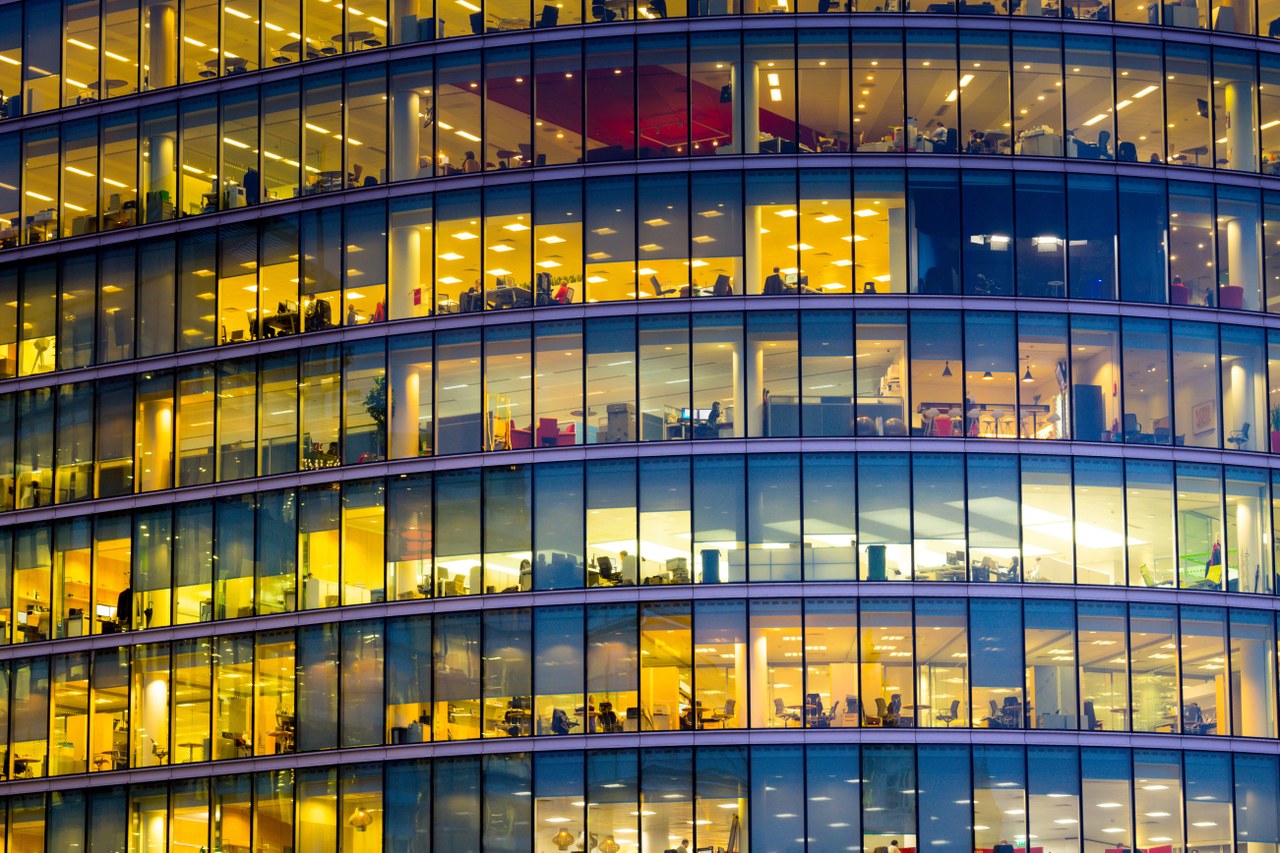Repro-light Consortium Concludes
Aldrans, Tyrol, November 2020 - The European research project Repro-light concludes after a three year journey which began in 2017. The consortium set out with the aim of supporting the European lighting industry in moving towards a more sustainable and competitive future. The project harnessed innovative technologies and materials to develop intelligent modular luminaires with matching smart production processes. The main components of these luminaires are interchangeable and configurable for the respective application (e.g. different LED modules and optics), and their software can be updated accordingly. The LED luminaire can change from a disposable object, into a customisable and sustainable product, with a high function value.
This modular ‘Luminaire of the Future’ provides the right light for our working activities, at the right place and at the right time of the day, adopted to our individual needs (personalised). It improves mood and productivity, and can positively influence our body’s circadian rhythm, which has a big impact on our health.
The research demonstrated a demand for improved and personalised lighting in society, and detailed scientific studies with a test population to confirm the positive impacts of such lighting on humans. The life cycle studies showed that there is a big potential to decrease the environmental burden of lighting by a smart and sustainable development and production process, and by careful material management (reusing of components, recycling, waste).
Led by representatives and driving forces from the European lighting industry, as well as manufacturers, experts on lighting sustainability and the social sciences, the Repro-light consortium executed this project successfully, to invoke a sustainable change in the European lighting industry well beyond the lifetime of the project.
The following outlines the achievements and outcomes presented by the consortium members detailing their findings and recommendations.
The Luminaire Manufacturing and Characteristics Specification developed and validated a specific technology model for lighting solutions: TAMLIGHT. An extensive European wide user survey (1100 workers) was done to fully understand the market demands for better lighting. Results derived from this large sample survey identified people in Europe expected better, personalisable and adaptable luminaire solutions in their workplace for the future.
The results produced analysis and definition of the individual and technical requirements for more sustainable and competitive lighting. The results revealed the importance of connected lighting to realise a Repro-light system. Both wired connectivity and wireless connectivity received the highest ratings as design attributes. Dynamic lighting for changing light in all dimensions (intensity, colour, direction) also scored highly along with, exchangeable and upgradable components, and firmware. The results concluded that the rating for these design attributes are driven by strategic requirements for circular economy of Repro-light systems. Efficiency was found to be not the most important design attribute but still attracted a medium-high rating.
Product and Process Design
The consortium partners developed a modular architecture for a continuous line luminaire, which maximises product variants out of a minimal set of components. To bring the full benefit of such a modular system to the customer, a configurator was designed. This allows the configuration of luminaire characteristics freely, generating all necessary technical data and manufacturing data as needed, and has a direct interface to the production line. Further developing the customisable luminaire concept by designing 3D-printed decorative and functional elements that can be manufactured according to the customer’s definitions. Investigations were also carried out for components of pointed luminaires in order to support modularity and customisation for such luminaires. Another driving force behind the modularisation was to increase the sustainability by elongating the usage time of the luminaire. However, in collaboration with the environmental assessment specialists, it was found to be not always the optimal approach.
A second luminaire architecture, the Personal Table Light (PTL), was developed to specifically improve workplace lighting and exploit the effects of light on the well-being and health of humans. The PTL achieves exceptional lighting for vision and health at the workplace and is fully personalised by the user via a desktop application. It is a user-centered, intelligent lighting system allowing a very flexible control of the illumination of table surface and back-wall, adjusting illuminance level, colour temperature and light distribution. Integrated sensors and control systems estimate the current user activities and automatically adjust the lighting in line with the user’s needs.
Smart Production Scheme for Industry 4.0
A fully automated production scheme was developed for continuous line luminaires with 400,000 variations. In contrast to methods of the past, when large quantities were produced for one type of luminaire, LED technology offers the advantage but also the challenge of a large number of variants. Therefore, the aim was to create a modular and thus largely flexible automatic production line.
One of the challenges was the connection between the configurator software and the automated production line, so that in extreme cases up to quantity 1 an automated assembly would still be possible. Several workstations were realised, examined and installed in a semi-automated pilot production line.
Furthermore, the highly customisable 3D-printing production for the morphing of polygonal geometries of bio-inspired shapes, has been integrated into the developed pilot production line to ensure an in-time production and availability of 3D printed components.
The results revealed a well-developed, customisable cost effective production, where the connection between the luminaire configurator, the ERP system, and the assembly line itself provided the key benefit for a smart production line. Thereby allowing automated and cost effective production for LED luminaires irrespective of multiple variants.
Environmental Assessment
The sustainable environmental performance of Repro-light luminaire designs in an industrial setting was assessed using LCA methodology, to consider the production, use and the end-of-life stages. The results showed an impact reduction of approximately 30% in the environmental categories related to climate change, primary energy demand and harm to ecosystems. This is because the electricity consumption in the use phase of the luminaire was reduced due to a novel light management system (daylight and presence control) and higher luminous efficacy. A further significant improvement was achieved in the production stage, since the impact associated with the natural resource consumption (minerals) was decreased significantly by 60%. This was attributed to a new design in the modular architecture of the luminaire to save materials (steel, plastics, etc.) and avoid the use of precious materials with a high environmental burden, such as gold in the LEDs.
The results further supported the luminaire eco-design which was another key focus of the Repro-Light project. The environmental assessment also was carried out in line with the circular economy by means of studies on the LED module exchangeability to know how this new characteristic influences the environmental performance of the luminaire in its life cycle. A key finding notes that additional efforts are necessary at the end-of-life of the design to improve material recovery as a secondary source. This is vital to minimise the virgin material extraction used in electronic components to enhance the circular value of the luminaire.
In summary, the raw material balance (abiotic resource depletion), the metals used for electronics and LED-boards and their recycling rates are mainly decisive (rare earths, as well as gold, silver, copper, nickel, lead and aluminum and their by-metals). A resource shortage is threatening in the case of gold and silver and the rare earths. As far as the toxicity of the materials used is concerned, the mining of rare earths (toxic sludges) and uncontrolled contamination with copper, iron, lead, nickel and silver are crucial.
For all other environmental burdens such as CO2 pollution (global warming), primary energy consumption, soil acidification and eutrophication, the operation of the luminaires (energy consumption) is responsible for about 98%.
The technological acceptance and usability of the developed workplace lighting solution (Personal Table Light, PTL) has been proven in a field study, and the expected non-visual effects of the PTL have been investigated in laboratory studies with a test group. To achieve the necessary daily light dose, special “light showers” were applied to the study group and the acute effects were measured.
The Repro-light consortium successfully achieved the objectives of the project to offer a luminaire scheme to minimise the ecological footprint of LED lights. Specifically taking into consideration the extraction of raw materials for a circular economy, increased maintenance, reuse and reprocessing, all before the product design stage to avoid waste and environmental pollution.
Looking beyond the state of the art technology developed and analysing the results and potential impacts (including the socio-economic impact and the wider societal implications of the project so far), Repro-light confirms the demand for an easy to use, customisable lighting system, which was realised with a so-called Personal Table Light (PTL). Currently with patent pending, the PTL has the potential to transform workspace lighting worldwide. The results regarding automation and customisation in production will push lighting manufacturers to a more sustainable and individual modus operandi, including data handling and logistics measures. The results of the life cycle analyses will deeply affect the future luminaire and production designs in the lighting industry.
Further detailed information can be found on the website https://www.repro-light.eu/downloads
About
Funded through the European Commission’s Horizon 2020 work program, the Repro-light consortium consists of leading European experts including; TRILUX, a driving force of the European lighting industry, components manufacturers including BJB, Grado Zero Espace, and Rohner Engineering, innovative members of the lighting industry, Bartenbach and Luger Research, as well as experts in lighting sustainability and Life Cycle Assessment IREC and Mondragon University who are prominent in Social Sciences.
This project has received funding from the European Union’s Horizon 2020 research and innovation programme under grant agreement No 768780.

Contact: Wilfried Pohl wilfried.pohl@bartenbach.com
Telephone +43 512 3338-66
Twitter: https://twitter.com/Reprolight
Web: https://www.repro-light.eu/
YouTube https://youtu.be/yYygYZkum5w

